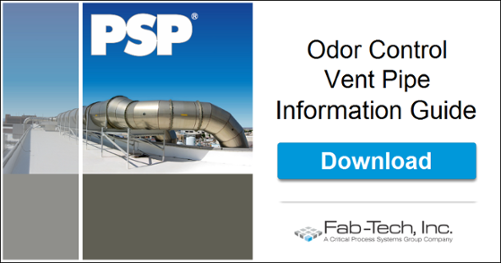4 Considerations for Wastewater Odor Control Technology
When odors from wastewater treatment facilities become problematic for surrounding communities, they have the potential to cause more headaches than simply an unpleasant smell. Depending on the severity of the foul air, locals may contact plant management to complain, or in more severe cases they may even reach out to local government or the media to make their complaints be known. If these odors begin to garner political or media attention it could hurt the reputation of the plant. Moreover, severe odors can impact job satisfaction and even the safety of on-site employees.
So, what can be done to control problem odors?
/treatment-plant-wastewater-2826990_640.jpg?width=640&name=treatment-plant-wastewater-2826990_640.jpg)
Wastewater odor can be generated at just about any stage of the treatment process, which means liquid and/or vapor phase wastewater odor control technology may be applied [1]. Such technology can include chemical, mechanical, or operational methods, and may include any combination of these depending on community and municipal preferences, regulations, or the severity of the problem.
To get a better idea of the different options that are available for managing wastewater foul air, we've identified and summarized four distinct odor control technologies and methods below:
2. Chemical Additives are a liquid-phase odor control technology that can be applied directly to the wastewater stream to neutralize or interact with odor-causing compounds. This approach is generally applied upstream in the wastewater collection systems to control odor and corrosion at multiple source-points [1]. While potentially effective, this technology requires specific application knowledge and awareness of which oxidizing agents to use to avoid creating additional hazards or environmental concerns.
3. Deodorizing Misting Systems can be used to target airborne volatilized odor compounds (VOC) by saturating outdoor facility air with sprayed deodorizing mists delivered through a network of pumps, filters, injectors, and hose-lines. This vapor-phase odor control technology operates on a similar principle as canned aerosol deodorizing sprays, only on a much larger scale. Some considerations for this technology might include the energy, maintenance, engineering, and chemistry needed to fit your application, as well as the ideal weather conditions needed for optimal effect.
4. Containment Systems are usually part of a larger solution for wastewater odor control. Here, odors are contained in sealed tanks, basins or lagoons with airtight industrial covers. This solution is useful for preventing the escape of VOC, but proper air handling is still required to ventilate and convey the accumulated odors, gases, and compounds to be neutralized.
In summary, the wastewater treatment process creates and transports malodorous fumes that can contain hydrogen sulfide, methylmercaptain, dimethyldisulfide, chlorine, ozone, sulfuric acid, sodium hypochlorite, hydrogen chloride, methane, and more.
View Our Chemical Compatibility Charts
Fab-Tech's fluoropolymer coated stainless steel fume exhaust duct sets the standard for corrosion resistance and odor control in wastewater air handling systems. Additionally, our systems are easily installed and adaptable to virtually any pre-existing system, equipment, or material.
If you would like more information about PSP® odor control vent pipe and duct, please feel free to download our general information guide below:
OR
Visit Our Wastewater Treatment Odor Control Page
Sources:
[1] https://www.wwdmag.com/decentralized-wastewater/wastewater-odor-control-evaluation-technologies
[2] https://www.wwdmag.com/wastewater/containment-methods-odor-control-systems-wastewater-plants

